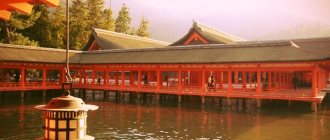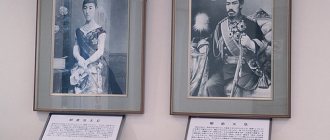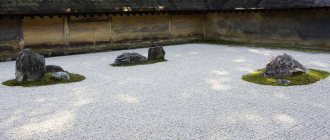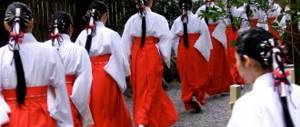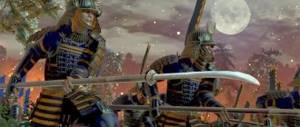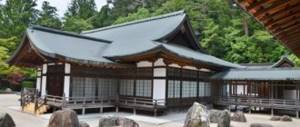In the small Japanese town of Nara there is an unusual Buddhist temple built of pure wood. The sacred place of the Japanese is Todaiji.
Todaiji is the only wooden temple in the whole world. Its enormous size is impressive and surprises tourists. To this day, religious rituals are held in the temple. Buddhist monks while away their days here.
Pilgrims from all over the world come to Todaiji to bow their heads before the huge Buddha statue.
Todaiji attracts not only pilgrims, but also numerous tourists. Every year their number continues to grow steadily.
Todaiji Temple - history
As mentioned a little above, the construction of the temple began in the 8th century AD. Due to the fact that the Japanese kept chronicles throughout most of their history, it is safe to say that the construction of Todaiji started in 743. The Japanese emperor named Shomu, who ruled in those distant times, issued a document in which he addressed the people with a request (!), and not an order, to build a temple and cast a huge statue of Buddha. The thing is that in the middle of the eighth century, Japan was going through perhaps the most difficult times in its entire history.
View of the temple from the Great South Gate
Constant wars between clans, militant samurai trying to prove their right to rule a separate territory and epidemics that claimed millions of lives struck the Land of the Rising Sun like a hurricane. Emperor Shomu decided that the construction of the temple, and most importantly, the casting of a huge statue of Buddha, would finally save the empire from the impending troubles.
The people of Japan fully supported their emperor (otherwise it cannot be otherwise in Japan, even today), and the construction of the Todaiji Temple began almost immediately after the corresponding decree was issued. Time has preserved to this day even the name of the architect who developed the Todaiji project and figured out how to cast and assemble the statue of Buddha Dainichi in parts: the talented Japanese name was Kuninaka-no-Muraji Kimimaro. Almost 2,500,000 (!) people took part in the construction of the temple and the casting of the Buddha statue, which, by the way, is considered one of the largest on our entire planet. One has only to imagine the scale of work in which so many people were employed in ancient times: only a large industrial metropolis can “boast” of such a population these days. With such a huge workforce, Todaiji Temple was completed in record time - just two years after construction began.
. The main difficulty was how to cast the Buddha statue, the throne for it, and how to assemble the massive parts into a single whole. After all the work was completed, the temple was consecrated in accordance with all the traditions of Buddhist teachings. The solemn ceremony of consecration of the temple was personally attended by the emperor and his wife.
View of the entrance to the temple
In the 12th century, war broke out between clans in Japan. As a result of the fighting that engulfed the entire country, the Todaiji Temple burned down. The main shrine of Japan was restored, but in 1567 the main sanctuary of Buddhism burned down again: as mentioned above, it was built entirely of wood.
LiveInternetLiveInternet
Quote from Marina_Ushakova's message
Read in full In your quotation book or community!
Todai-ji is the largest wooden structure in the world
One of the oldest Buddhist temples in Japan is Todai-ji, in the city of Nara. First of all, this temple is known as the largest wooden structure in the world. In addition, within the walls of the temple there is a huge bronze statue of Buddha, which was smelted more than a thousand years ago! Construction of the temple began in the middle of the 8th century. It was at this time that Buddhism became widespread in the Land of the Rising Sun. The new religion had a strong impact on the art and architecture of the country.
The construction of Todaiji Temple dates back to the middle of the 8th century, when Buddhism, which had penetrated into Japan two centuries earlier, had already become the state religion and had a significant influence on the art and architecture of this country. At that time, the capital of the Japanese state was the city of Nara. Now Nara is one of the most revered holy places in the Land of the Rising Sun, where about 3 million pilgrims come annually. Here, on an area of about 525 hectares, there are several Buddhist and Shinto temples and idols with a long history.
Todaiji Temple occupies a central place among the shrines of Nara. For a long time it was the main state shrine of the country, and the name “Todaiji” literally means “Great Eastern Temple”. Todaiji Temple is widely known for its bronze sculpture of Dainichi Buddha (Daibutsu), which is the largest Buddha statue in Japan and one of the largest in the world. It was sculpted in 749 by a Korean sculptor, whom the Japanese call Kimimaro. To make the giant statue, it took 437 tons of bronze, 150 kilograms of gold, 7 tons of wax, 70 kilograms of mercury and several thousand tons of charcoal.
According to legend, all the reserves of bronze in Japan were used up to cast the statue. The work took two years and was technologically extremely complex. Difficulties were caused not only by the casting process itself, but also by the installation and installation of the statue on a pedestal (taking into account the state of the art at that time!). After all, this phenomenal ancient structure weighs twice as much as the Statue of Liberty in New York, which was made eleven centuries later. How did the master manage to overcome all the technical obstacles? This remains a mystery, and the secret of making this unique monument of ancient foundry art has not yet been revealed.
From ancient Japanese sources it is known that the work of casting the statue of the Great Buddha was completed only after seven unsuccessful attempts. The Buddha's head and neck were cast in one mold, while the torso and lotus throne were made in separate molds and then soldered together and gilded. The Great Buddha statue at Todaiji represents "blessing, omnipotence and omnipresence." Buddha sits with his legs tucked under him in a peaceful pose on a throne in the form of a colossal blossoming lotus flower with 56 petals. The lotus appears here as a symbol of spiritual chastity, purity and purity necessary for immersion in nirvana, achieving bliss achieved as a result of overcoming “passion and thirst for life.” The Buddha's right hand, palm open, is extended forward in a blessing gesture. Buddha's hair is blue - this symbolizes his stay in the transcendental heavenly world. The hair is divided into 966 curls. There is a knob-like protrusion on the forehead: a symbol of greatness and inaccessibility.
The Great Buddha is one of Japan's most famous landmarks. The height of the statue with a pedestal is 22 m. The height of the seated figure of Buddha is 16 m. The face is 5 m long and 3 m wide. A person can freely crawl through the eye sockets - their length is 1 m. The diameter of the lotus throne is more than 20 m, the height of each petal is 3 m. The huge statue is hollow inside. In its depths a complex system of wooden structures was created that supported the entire figure. Once a year, the Great Buddha is cleaned, and several buckets of dust are removed from it.
The entire surface of the lotus throne is covered with countless images of a religious and mythological nature, thousands of hieroglyphic inscriptions. Behind the giant statue is a gilded wooden halo, on which are mounted 16 more Buddha figures approximately the size of a man, depicting his previous incarnations. Next to the statue there are two sculptural figures of saints - bodhisattvas. Japanese tradition identifies them with the thousand-armed goddess of mercy Kannon and the goddess of happiness. Their size is half the size of the Great Buddha statue. To the right behind the Buddha figure is a wooden column with a small hole. There is a belief that a person who manages to climb through it will be forgiven all his sins. Todaiji is an active temple, and in front of the statue of the Great Buddha, a service is performed daily, a fire is lit and incense is burned, monks and pilgrims read Buddhist prayers - sutras.
The hall of Todaiji Temple, which houses the Buddha sculpture, is called Daibutsuden - Hall of the Great Buddha. Todaiji was once the main temple of the Kegon Buddhist sect, whose teachings came to Japan from China in the 8th century. Construction of Todaiji Temple began at the turn of the 20s and 30s of the 8th century and lasted twenty years. It was declared a national affair, requiring the mobilization of all the country's resources. The temple was dedicated in 752 in the presence of the Emperor and Empress, the court, clergy and representatives of all the provinces of Japan, as well as embassies from China and Korea. In the 12th century, during the civil war, the huge temple burned down. During the fire, the Buddha's head was damaged and had to be replaced with a new one. Today you can notice that the Buddha's head is a darker color than his torso. According to other sources, the entire Buddha sculpture was badly damaged by a fire and many elements were replaced in the 18th century, so it cannot be considered entirely authentic.
In 1567, the temple burned down again, and the Great Buddha stood in the open air for more than a hundred years. Only in 1699 did restoration work begin, but three years later, having only half built the temple, construction was abandoned again. In this form it stood for about two hundred years and as a result completely collapsed. Construction was resumed only in 1903 and lasted ten years. By 1913, the temple was restored to its original form. Its height is 50 m, length - about 57 m, width - more than 50 m. This is the largest wooden building in the world, and for its time it was simply a miracle of construction art. The walled temple is entered through the Great Southern Gate - Nandaimon, with a two-tiered roof and five bays, which were rebuilt in 1199 and supported by eighteen wooden columns.
Solid trunks of giant trees 21 m high were used as columns. On both sides of the gate there are colossal statues of fantastic guardian monsters Nyo. The massive entrance doors of Todaiji Temple are designed in the ancient style of Japanese temple architecture. A monumental arch above the entrance under a hipped roof with curves characteristic of Japanese architecture gives the building solemnity and majesty. The walls of the temple are decorated with magnificent wooden carved reliefs, lacquer painting, and enamel, executed with truly Japanese taste and perfection of form.
The temple treasury contains many ancient objects: ancient Buddhist and traditional Japanese robes, sacred vessels, jewelry, treasures, traditional Japanese art made of paper and silk. Thanks to the study of records on ancient scrolls, researchers were able to find out that the casting of the Buddha statue was completed only after seven unsuccessful attempts. The huge figure of the deity consisted of several parts, each of which was cast in a separate mold. Later they were all soldered together and gold plated. The height of the assembled figure with a pedestal was 22 meters, and without a pedestal - 16 meters. The Buddha's face reaches 5 meters in length and 3 meters in width. An adult can easily climb through the Buddha's eye sockets, since they are about a meter long. The figure of the deity is actually hollow inside, and once a year the Buddha is cleaned by removing several buckets of dust from him!
Todaiji (743-752, XII, XVII and XVIII centuries) an ensemble of wooden buildings, had a symmetrical layout modeled on Chinese monasteries of the Tang era), Hokkedo (founded around 746-748, worship hall 1190) You can get to Todai-ji Temple through the Great The south gate has a two-tier roof and five bays. This entire structure is supported by 18 wooden columns, and on both sides of the gate there are huge statues of guards.
The main building of the temple is considered the largest wooden structure in the world! Its length is 57 meters, and its height and width are 50 meters each! This is a real miracle of construction art! On the temple grounds, in addition to the main building, there are several unique pagodas and smaller temples. The temple area itself is a deer park. Many deer roam here, which tourists happily feed.
Buddha from Todai-ji Temple. Big Buddha
This post is an addition to the story about the Todai-ji Temple itself. Here - about the Buddha, who has been sitting there since the first century AD.
Before visiting the temple, you need to enter into a cloud of smoke from incense in order to cleanse yourself of bad thoughts and tune in to the right mood. But since there are a lot of people, the ritual is reduced to scooping up and waving this smoke on oneself.
The story goes like this: In 743, Emperor Shōmu decreed the creation of a giant Buddha statue, intending to make Todai-ji the premier Buddhist sanctuary of the Earth. All the bronze mined in the country for several years was spent on the construction of the figure. The statue was damaged by an earthquake in 855 and its head fell off. Integrity was restored only six years later. Then, during the civil wars, the statue melted twice due to fires. Buddha finally found peace in 1692. The temple itself was also rebuilt; previously the structure was larger.
Dimensions of the statue: height 15 meters, face more than 5 meters, eyes 1 meter, nose 0.5 meters, ears 2.5 meters, weight 500 tons. Buddha sits on a lotus petal.
Todaiji Temple - a feat in the name of Buddhism
Before going into more detail about exactly how the Buddha statue was cast and installed in the Todaiji Temple, its dimensions and weight should be clarified. With the throne, the height of the statue slightly exceeds 22 meters, only the Buddha's ears are 2.5 meters long. To give a person who is planning a trip to Japan and a visit to the “Great Eastern Temple” itself an idea of the difficulties that the ancient builders faced, a comparison can be made: The Statue of Liberty in New York weighs 31 tons, but the weight of the Buddha statue in Todaiji exceeds 500 tons! Given the level of technological development in the mid-8th century, casting and installing the Dainichi Buddha seemed an impossible task. But it only seemed so. The Japanese, who with all their hearts wished that the misfortunes that befell their country would remain in the past, accomplished a real feat. True, for these purposes they had to use almost all the bronze reserves of the entire country!
Bronze lantern in front of the entrance to the Great Buddha Hall
There are ancient Japanese chronicles that indicate that the installation of Buddha in the Todaiji Temple was only possible on the eighth attempt
. During casting work, people often died under the massive parts of the statue. Modern experts have conducted certain studies, the results of which have shown that during the casting of the Buddha, craftsmen used about 10,000 tons (!) of charcoal for furnaces, 440 tons of bronze, about 70 kilograms of mercury (even this toxic chemical element was used) , 150 kilograms of pure gold and 7.5 tons of beeswax.
How it was possible to bring this fantastic idea to life in those distant times, and what technologies were used, still remains a mystery. There is only evidence that the throne and body of the Buddha were cast separately from the head and neck. After the lotus-shaped throne and body were installed in the designated place, the head and neck were attached to them. After this, we still had to fill the joint with bronze and cover the entire statue with gold.
Vairocana Buddha Statue
Amazing and inexplicable! Just as inexplicable as the construction of the Egyptian pyramids. Yes, a huge number of people took part in the work, yes, many of them gave their lives under heavy parts or died from toxic fumes of mercury, but even the most authoritative modern sculptor cannot explain how such two huge parts were cast in one piece. In addition, we should not forget that the work was carried out not now, when there are huge blast furnaces and cranes capable of carrying the heaviest blocks, but in the 8th century...
Statue
To give you an approximate idea of the scale of the sculpture, here is a brief description in numbers:
- body – 15 m;
- pedestal – 17 m;
- head – 5.5 m;
- nose – 50 centimeters;
- ears – 2.5 m;
- eye – 1 m;
- lips – 1.3 m;
- point on the forehead – 30 centimeters;
- strands of hair – 966.
To make it more clear, you can compare the height of the Buddha with a five-story building - the statue will be taller.
The well-known Statue of Liberty in the United States weighs thirty tons. For comparison: the weight of Todaiji Buddha is five hundred tons.
The structure is hollow from the inside and is supported by a special wooden structure. The statue is kept in a separate room of the temple - in the Hall of the Great Buddha, known in Japanese as Daibutsuden. Initially, it rose one hundred meters, but over time, after several fires and natural disasters, it was halved. Now it rises 50 meters, reaches the same width, and is almost 60 meters long.
It’s amazing how much attention to detail and enthusiasm the craftsmen approached their work. Every line, every feature on the face that forms his expression is thought out to detail.
Vairochana sits in padamasana - the lotus position - on a beautiful throne made of an open lotus bud, personifying openness, freshness, and pure intentions. There are fifty-six petals in total, and each one has Japanese symbols on it - together they make up mantras directed to the deity.
The Buddha's left hand rests relaxed on his knee, and his right hand stretches forward. This gesture has a special meaning - the deity seems to bless the state and strives to bring goodness and happiness to the residents.
The face is calm and relaxed, there is an aura of holiness around the head, and the blue color of the hair symbolizes nirvana. A dot on the forehead also indicates the presence of higher powers.
The main statue is guarded by sixteen other sculptures. They are not so majestic and are made in full human height, but this is precisely what goes back to the sixteen incarnations in which Buddha was in the human world in the past. Also among the sculptures you can see the goddess of happiness and the goddess of mercy.
Every year, about 100-200 monks, using special means and ropes, descend to the statue and carry out a general cleaning of dirt and dust.
Great Buddha from Todaiji Temple
A modern tourist who comes to see one of the largest Buddha sculptures in the world will be able to notice that in addition to casting massive parts, ancient craftsmen paid great attention to the smallest details. Dainichi Buddha sits on a throne. This throne represents a blooming lotus flower, popular in Buddhism. The number of petals of the flower, which symbolizes the spiritual purity of the deity, his peace of mind and balance, so necessary for the journey to nirvana, is 56. By the way, all these petals are dotted with numerous hieroglyphs. These are the prayers of the Japanese people offered to Buddha.
One of two statues of saints - bodhisattvas
A giant Buddha statue sits peacefully on this huge flower, its face expressing peace. The monks of Todaiji Temple will tell any tourist that the sculpture was made in order to symbolize the power of the highest good forces in Japan, the presence of Buddha in any place. The deity, who weighs more than 500 tons, has his arm extended forward. This was done by the ancient masters for a specific purpose: in this way, Buddha blesses the entire Land of the Rising Sun and thereby brings peace and grace.
As already mentioned, the ancient sculptors paid attention to even the smallest details: only on the Buddha’s head there are 966 curls of his hair, they are painted in the brightest blue color, which is also not accidental; the blue hair of the deity in Buddhism symbolizes his constant stay in nirvana in heaven. You can see a bump on the forehead of the statue - in Buddhism it is a symbol of higher powers, greatness and superiority over mere mortals. It is interesting that many ufologists claim that Buddha is a representative of an alien civilization that visited our planet in ancient times. This is the reason why he has a growth on his forehead. The opinion is controversial, but it, like many others, has its right to life.
Statue of Bishamonten - one of the two guards of Todaiji
There is more than one Buddha in Todaiji Temple, behind him you can
Interior of the temple
You should enter the temple through the main gate in the south, called Naidamon. In the last year of the 12th century, the roof of 2 tiers and 5 bays was rebuilt. The entire structure is supported by 18 wooden columns. To install them, whole trunks of powerful trees over two tens of meters high were used.
Gate to Todaiji Temple
Interestingly, inside the columns there is a small passage, similar in size to the nostrils of the copper Buddha. It is believed that those who can pass through them will receive happiness and quick enlightenment. Children, teenagers and miniature Japanese perform this trick without difficulty, but foreign adults often get stuck.
The gate is guarded by two rather scary-looking creatures. The doors are massive in the spirit of the canonical Japanese architecture of the Middle Ages. And above the tent roof stretches an arched vault, making the atmosphere even more solemn.
Todaiji Gate Guard
The entrance doors lead to a hall where you can light incense, put it in a special bowl and enjoy the wall paintings. Masterpieces of architecture, skillful bas-reliefs, paintings written in enamel and repeating Japanese and Buddhist motifs - all this is embodied in the walls of the temple. Visitors then enter a hall where Buddha sits on his lotus throne.
Another important structure in the shrine is the Sesoin Treasury. Many artifacts have been kept here since ancient times, including national clothes of ancient eras, dishes, jewelry, silk products, jewelry, and important manuscripts, thanks to which historians reconstructed the events of bygone years.
But the main values of Sesoin are the ceremonial swords Ehoken and Inhoken. They were donated in the mid-8th century by Princess Kome, but almost all the time they were considered lost. As a result, swords studded with gold, silver and engraved glaze were found in the underground near the statue of Vairochana.
Todaiji Temple in modern times
The Todaiji Temple acquired the appearance that a modern visitor to Japan can enjoy today only after 1913. The thing is that after the fire of 1567, the holy place was only partially restored. A large-scale reconstruction of one of the main attractions of the country was undertaken by the authorities only in 1903. It took 10 years to completely restore the world's largest wooden temple! And this despite the fact that in the eighth century it was built in just two. By the way, the head of the 500-ton Buddha is also “fake.” More precisely, not the one that was attached to the torso during its construction. During the Civil War, it was damaged in one of the many battles. True, a new head of the Buddhist deity was cast almost immediately. It is for this reason that today it is a different color from the torso and the throne on which the Buddha sits.
Inside the temple
In the 21st century, pilgrims professing Buddhism and guests of the city of Nare, which was previously the capital (!) of the Land of the Rising Sun, can enter the temple, surrounded by a wall from the bustling world, through the South Gate. The entrance to the temple, where Dainichi Buddha sits on his throne, is guarded by two Nyo monsters. There is no need to be afraid of them; they, like many architectural elements of the temple, were made by ancient masters and are terrifying only by their appearance. By the way, quite often at this gate numerous tourists take photos of Todaiji Temple.
In addition to the statue of Buddha, to which millions of pilgrims go to worship, the interior of the temple is also of great interest. Quite interesting is the painting of the walls and ceilings, from which you can easily determine that you are not in China, but in the Land of the Rising Sun. The collection of treasures of Todaiji Temple deserves special attention: here you can really see the rarest and most priceless items
, dating back to the beginning of our era, and which shed light on the difficult history of Japan and the formation of Buddhism in it. Guests of the temple, who have carefully read the tourist brochures for Todaiji, which are issued absolutely free to all their clients by hotels in Japan, after familiarizing themselves with the 500-ton Buddha, are directed to two ancient samurai swords.
View of the temple ceiling
Five years after the completion of the construction of the Buddha statue, an empress named Komyo presented two samurai swords to the monks of the temple as a gift. By the way, they knew about their existence from ancient chronicles, but they were found only in 1907. It turns out that, on the orders of the empress, the workers hid these relics under the floor right next to the throne of Buddha. Thus, Komyo wanted to make sure that these priceless swords would remain in the Todaiji Temple forever. In 1930, two samurai swords, made using special technology and decorated with precious metals, were included in the list of national treasures of Japan. The same list that includes the legendary Matsumoto Castle. By the way, scientists found hieroglyphs on the handles, from which they were able to find out the names of the swords (in Japan, every sword that was made over the decades and belonged to a samurai is animated and has its own name). You can look at Inken and Yoken (these are the names of two samurai swords) in a special room at Todaiji Temple. Despite the fact that they are at least more than 1,200 years old, they are preserved in excellent condition, and their blades are capable of cutting an almost weightless silk scarf.
In addition to the statue of Buddha, sculptures of his reincarnations, unique paintings of walls and ceilings, Inken and Yoken swords, tourists will be able to see in the Todaiji treasury a huge number of objects and jewelry made of precious metals, decorated with precious stones, which at one time belonged to Japanese emperors.
Hole in a temple column
All guests of the Todaiji Temple should pay their attention to the supporting columns, or more precisely, to the passage between them
. Interestingly, its diameter is identical to the nostrils of the giant Buddha sculpture. There is an ancient legend that whoever passes through this passage will become a happy person and enlightenment will descend on him. A temple was built for the Japanese, and they, as you know, are not tall. Therefore, only children or teenagers can easily pass through this passage. Many tourists, who could not soberly correlate their physique with the diameter of the passage, end up in it, but cannot get out on their own. Almost every day, the monks and caretakers of the monastery are faced with a certain difficulty, which is to get a well-fed traveler out of the passage between the supporting columns.
Attraction rating
Rating 5.00 [4 vote(s)]
| ← Asia | Japan |
What to see
The entrance to the temple territory is marked by a massive gate - Nandaimon. 18 columns made from solid trunks of huge trees support a two-tiered roof, and the passage is guarded by a pair of mythical monsters Nyo. The building of the temple itself is designed in the best traditions of Japanese architecture - smooth curves of the roofs, intricate carvings and lacquer painting - the masterfully executed rich decoration of the temple speaks of its most important religious status in the Land of the Rising Sun.
The dimensions of Daibutsu-den are impressive - its height is about 50 m, its length is 57 m, and its total area is almost 3000 square meters. m. Even now, this powerful wooden structure amazes tourists who have seen a lot with its dimensions, and in the 8th century it was considered a real divine miracle and the pinnacle of the art of construction.
Inside the pavilion is the famous 500-ton statue of Buddha Vairocana. Todai-ji belongs to the Kegon Buddhist sect - the School of the Majesty of the Flower of Law, and is still an active temple: services are held here every day, monks read sacred sutras and light a ritual fire.
While examining the statue of the Big Buddha, try to imagine with what awe the residents of the ancient capital looked at the bronze giant: a golden throne in the shape of a lotus flower, covered with sacred texts, supports a massive figure; a huge palm, twice the size of a person, is folded in a blessing gesture, and eyes half-hidden by eyelids calmly look at the world from a 20-meter height.
The sculpture is a hollow structure supported from the inside by a wooden frame. Every year the sculpture is cleaned of soot and dirt, removing several buckets of dust. By the way, you can notice that the head and neck of the Buddha are slightly different in color from the torso - this is the result of repeated restorations.
Behind the Buddha there are 16 more human-sized statues - they symbolize the previous incarnations of the deity. Also in the pavilion are statues of Kannon, the goddess of mercy. And especially popular among tourists is the column, at the base of which there is a hole called “Buddha’s nostril.” According to legend, whoever can crawl through the hole will be freed from sins and will attract good luck.
On the grounds of Todai-ji is the Shosso-in Museum Pavilion, whose art collection is considered to be the oldest in the world. The simple log structure, built in the 8th century, was best suited for storing temple relics in the difficult conditions of the Japanese climate thanks to the original solutions of the ancient builders.
Shosso-in today houses an extensive collection of manuscripts, Buddhist relics, musical instruments, clothing, weapons and crafts. Of particular interest is a pair of richly decorated ritual swords - Yokohen and Inkohen. Only in 2010, museum staff confirmed that this was exactly the legendary gift of Empress Komyo, which was considered lost more than 1,250 years ago.
It is also worth visiting the Nigatsu-do and Sangatsu-do pavilions - their names translate respectively as the Hall of the second and the Hall of the third month. The February Pavilion takes its name from the sacred Xunye ritual that has been held here every year since the founding of the sanctuary. For two weeks, the monks of the temple pray to the Eleven-Faced Kannon for the atonement of the sins of humanity, and then symbolically burn all the filth in the flames of huge torches - after which, by the grace of the goddess, spring comes again to the world.
The March Hall is also known as the Lotus Hall - every spring, monks read sacred Buddhist sutras here. The pavilion contains many ritual scrolls and images, as well as a richly decorated statue of the Bodhisattva of Mercy, Fukukenjaku Kannon.
Todaiji Temple on the map
See more on Putidorogi-nn.ru:
Sights of the Czech Republic: list, description, photos
Europe
25-domed wooden Church of the Intercession: description
Europe
Pannonhalma Abbey: history, description
Europe
Avraamiev Epiphany Monastery: description
Europe
Circuit Gilles Villeneuve: history, features
North America
Azimov Mosque in Kazan: history, description
Europe
Water park KVA-KVA park in Moscow: description, photo
Europe
Aqueduct of Pont du Gard in France: history, description
Europe
Acropolis of Lindos in Greece: history, description, photo
Europe
